Canary Islands
One could visit the Canaries and dedicate a whole life to these clusters of earth amidst the Atlantic Ocean. We are simple folks, so let's at least dedicate an evening to savor the salty touch of local terroirs.

The Canary Islands, an enchanting archipelago off the coast of Africa, is not only a tourist's paradise but a vintner's venture. Once merely a haven for mediocre wines tailored for tourists, a tide of government subsidies has elevated the islands to a realm of distinctive wines. The islands are heralded for their distinctive volcanic terroir, which lends a unique minerality to its wines, further accentuated by the Atlantic's cool breeze and the consistent temperate climate.

The number of DOPs (Denominaciones de Origen Protegidas) across the archipelago has blossomed, with each island of La Palma, El Hierro, Lanzarote, and Gran Canaria acquiring its own by the mid-2000s, and Tenerife thriving with five: Abona, Tacoronte-Acentejo, Valle de Güímar, Valle de la Orotava, and Ycoden-Daute-Isora. In 2012, the Islas Canarias Vino de Calidad DOP was created, serving as an umbrella appellation for all the islands (including Fuerteventura, which lacks a designated DOP). Producers are allowed to mention this voluntary appellation on their labels along with the specific DOP.
The grapes here are as diverse as the islands themselves. Predominant varieties include Listán Blanco, Malvasia, Marmajuelo, Listán Negro, Negramoll, and Tintilla, with each island nurturing its own specialities like Malvasía Volcánica in Lanzarote and Listán Negro and Listán Blanco in Tenerife. What makes this diversity even more fascinating is the fact that phylloxera never made it to the Canary Islands due to isolation and volcanic soils in which it finds it hard to breed. If you listen closely, the local wines might tell you ungrafted tales of old.
Borja Perez Artífice Llanito Perera 2017
- Region
- Spain » Canary Islands » Ycoden Daute Isora DO
- Type
- white still, dry
- Producer
- Vintage
- 2017
- Grapes
- Listán Blanco
- Alcohol
- 12.5
- Volume
- 750 mL
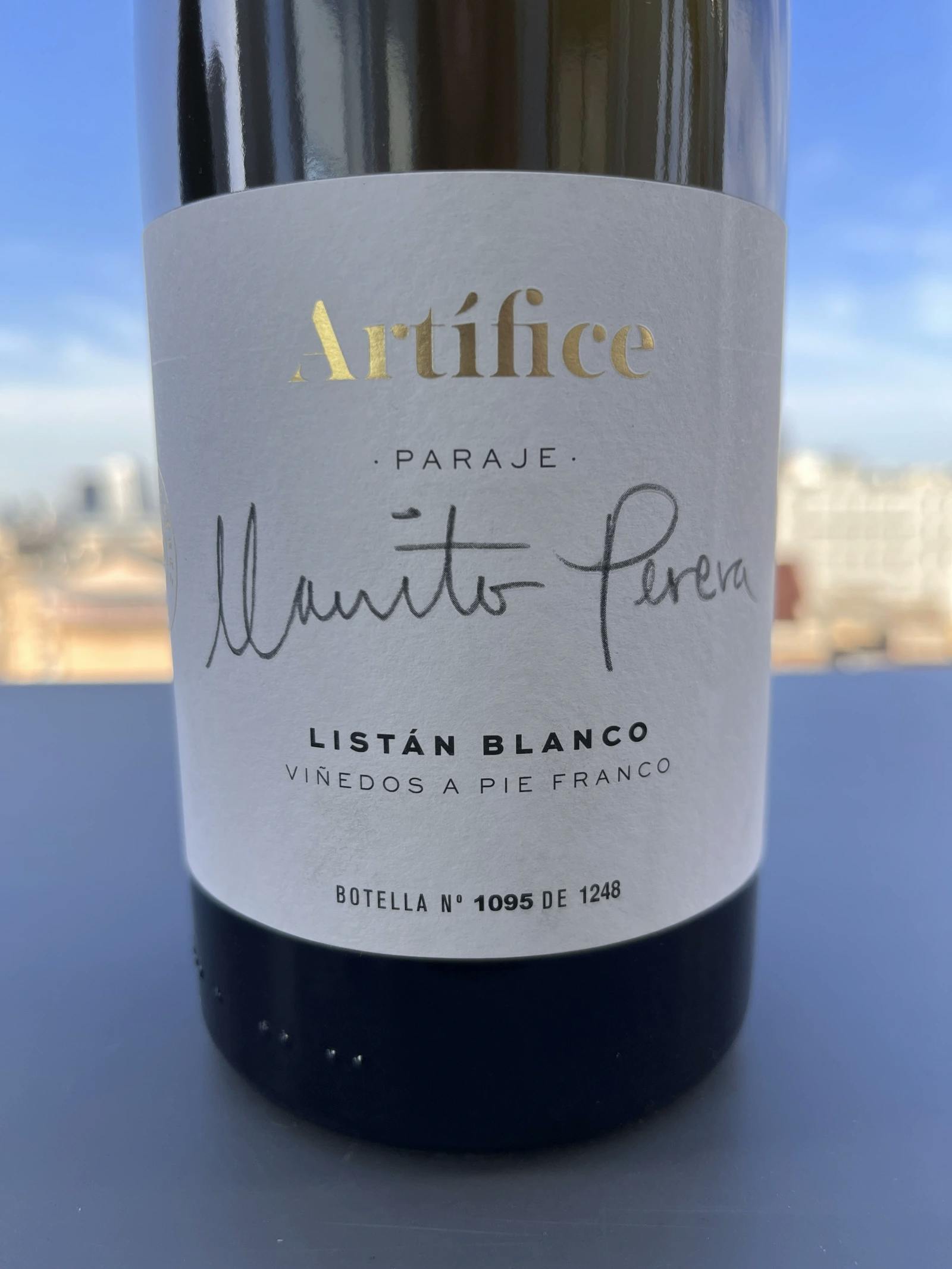
This wine secured the 🏅 7th place in our wine tasting lineup.
Our journey begins in Tenerife, one of seven islands off the coast of Morocco. This is the most populated island of the Canaries and the largest wine producer of them with roughly 8,000 hectares under vine (according to source #1). This is the home to Mount Teide, the highest peak in Spain (3,715 m) and the 4th tallest volcano in the world (if measured from its base on the ocean floor). Tenerife is also home to the highest vineyards in the whole of Europe (around 1,700 m).
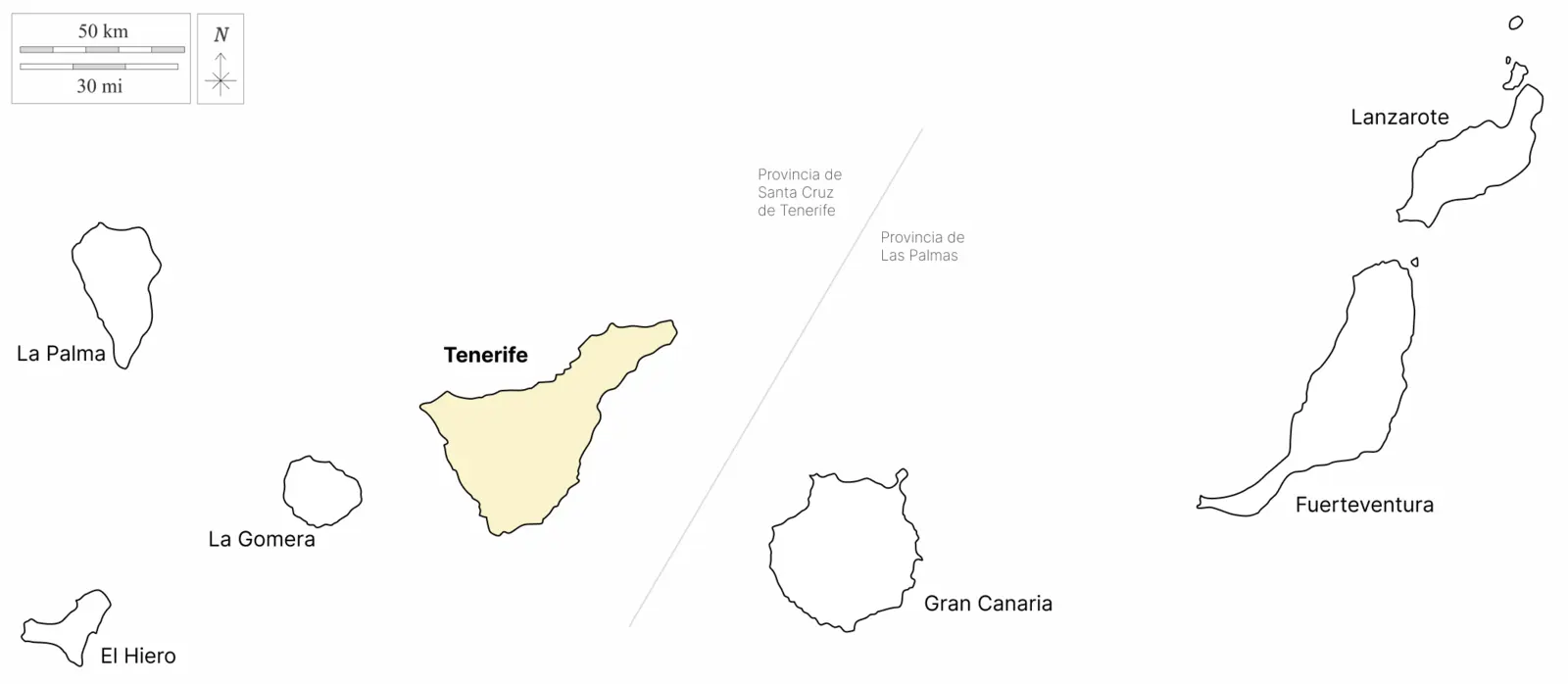
Borja Pérez González, a fourth-generation winemaker from Tenerife, has a rich legacy rooted in the fertile volcanic soils of La Guancha, nestled within the historic growing area of Ycoden-Daute-Isora DO. His viticulture journey began at a young age amidst the vine-clad landscapes of his family's winery, which has been crafting wines since 1927. Borja's path, however, took a detour as he ventured into the realms of agronomy, firefighting, and racecar mechanics before circling back to his enological origins. In 2011, the reins of the family winery were passed onto him, and with that, Borja embarked on a novel venture - Ignios Orígenes (the name of the project). This endeavour mirrored his ambition to blend tradition with innovation, fostering a range of volcanic wines that echo the unique terroir of Tenerife.
The tapestry of Borja's wines is a testament to his meticulous craftsmanship and profound understanding of the island's diverse viticultural milieu. With Ignios Orígenes, Borja sheds light on Tenerife's indigenous grape varieties - Listán Negro, Baboso Negro, Vijariego Negro, and the elusive white Marmajuelo, each articulating the island's volcanic narrative with a distinct voice. His label, Artífice (Spanish for "creator" or "artisan"), pays homage to his grandfather, a seasoned winegrower whose hands are immortalized on the labels. Borja's organic farming ethos, coupled with a natural winemaking approach, allows the volcanic, maritime vineyards to narrate their tales through every bottle, undiluted by additives, and unobscured by stabilization or fining processes. His wines, an aromatic blend of tradition and modernity, resonate with the sophisticated palate, offering a glimpse into Tenerife's viticultural saga. From the vine to the vino, Borja Pérez's journey is a narrative of heritage, innovation, and the indelible imprint of terroir.
The Artífice Llanito Perera 2017 encapsulates meticulous vinification, marrying 100% Listán Blanco grapes from two 80-year-old, own-rooted parcels in Llanito Perera, a zone within Ycoden-Daute-Isora D.O. Post-harvest, the grapes were directly pressed into aged 500L barrels for fermentation, where they matured for 12 months devoid of racking or bâtonnage, a technique preserving the wine's texture and inherent character.
Borja Perez's minimalist approach shone through; the turbid must, a result of direct pressing, enriched the wine with a texture reminiscent of skin maceration, sans actual maceration. This vinification simplicity, coupled with organic farming and the unique volcanic sandy loam soil, yielded a minerally, energizing white wine, with a production run of 1,248 bottles, embodying the terroir and traditional viticulture practices of Ycoden-Daute-Isora.
Envínate Palo Blanco 2019
- Region
- Spain » Vino de Mesa
- Type
- white still, dry
- Producer
- Wine
- Vintage
- 2019
- Grapes
- Listán Blanco
- Alcohol
- 12
- Volume
- 750 mL
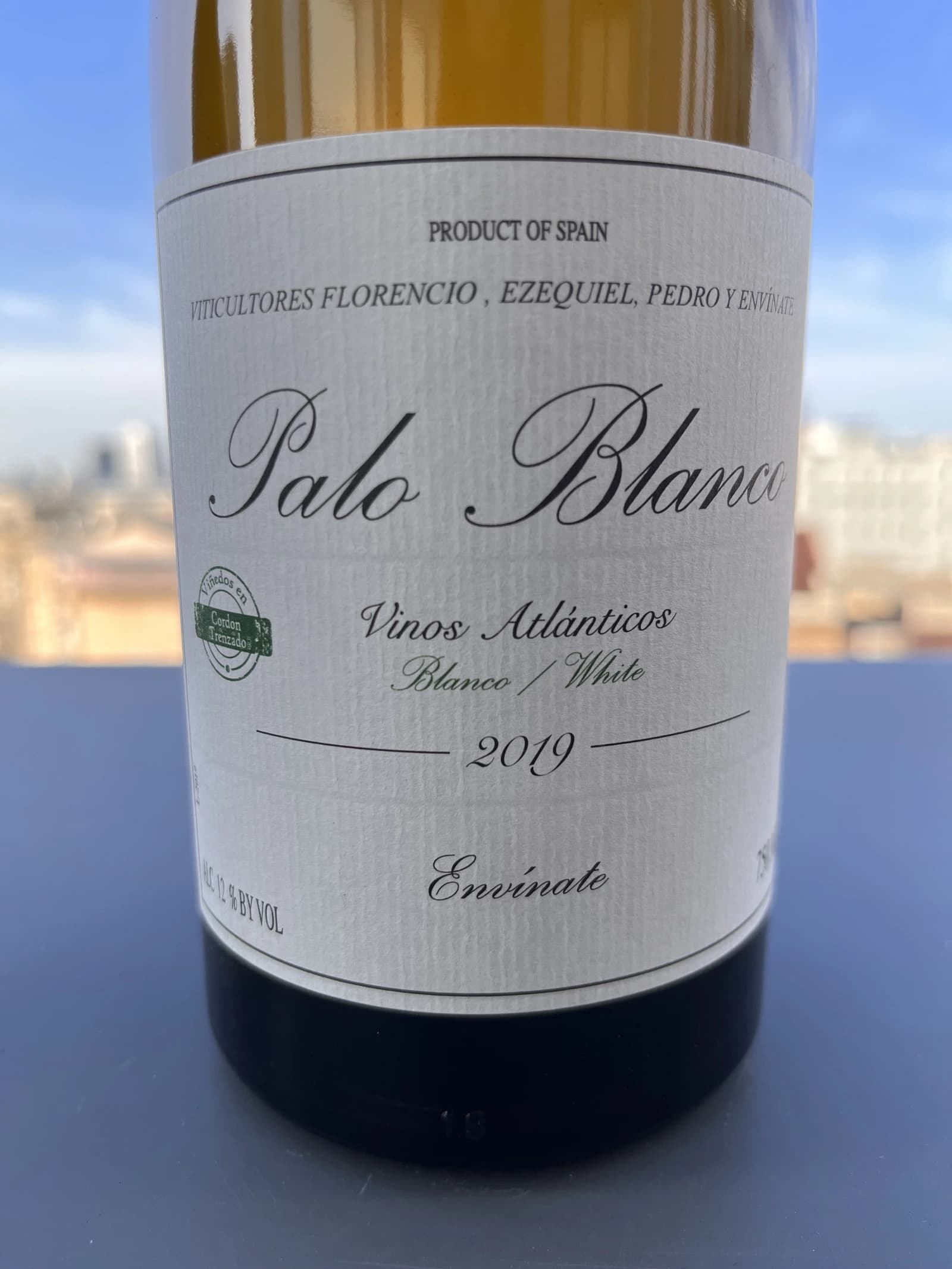
This wine secured the 🏅 6th place in our wine tasting lineup.
Envínate, a notable wine producer based in Spain, is a collaborative venture birthed from a shared vision among four oenology students - Alfonso Torrente, José Ángel Martínez, Laura Ramos, and Roberto Santana - from the University of Alicante. The winery encapsulates a minimal-intervention philosophy, channelling a range of wines from various Spanish regions, including the Canary Islands, Galicia, and Extremadura.

The quartet's approach to winemaking places a significant emphasis on expressing the terroir, particularly from Atlantic-influenced regions, manifesting in what is often referred to as "terroir-transparent" wines. Their projects are distributed across different regions: Lousas managed by Alfonso Torrente in Ribeira Sacra, Táganan and Benje overseen by Roberto Santana in Tenerife, and Albahra coordinated by Laura Ramos and José Martínez in Almansa.
The Palo Blanco cuvée is derived from a 1.5-hectare vineyard of Listan Blanco located at an elevation of 600 meters. Grown in the Valle de la Orotava on Tenerife's northern side, the century-old vines benefit from a blend of altitude, climate, and volcanic soils, factors contributing to the distinctive character and texture of the wine.
The grapes are hand-harvested, pressed full-cluster into a large concrete tank (6,300 litres) off the skins and fermented without malolactic occurring, then raised in two Friulian 2,500 litres oval foudres for 10 months. Bottling is without fining or filtration.
Borja Perez Ignios Orígenes Marmajuelo 2017
- Region
- Spain » Canary Islands » Ycoden Daute Isora DO
- Type
- white still, dry
- Producer
- Vintage
- 2017
- Grapes
- Marmajuelo
- Alcohol
- 13.5
- Volume
- 750 mL
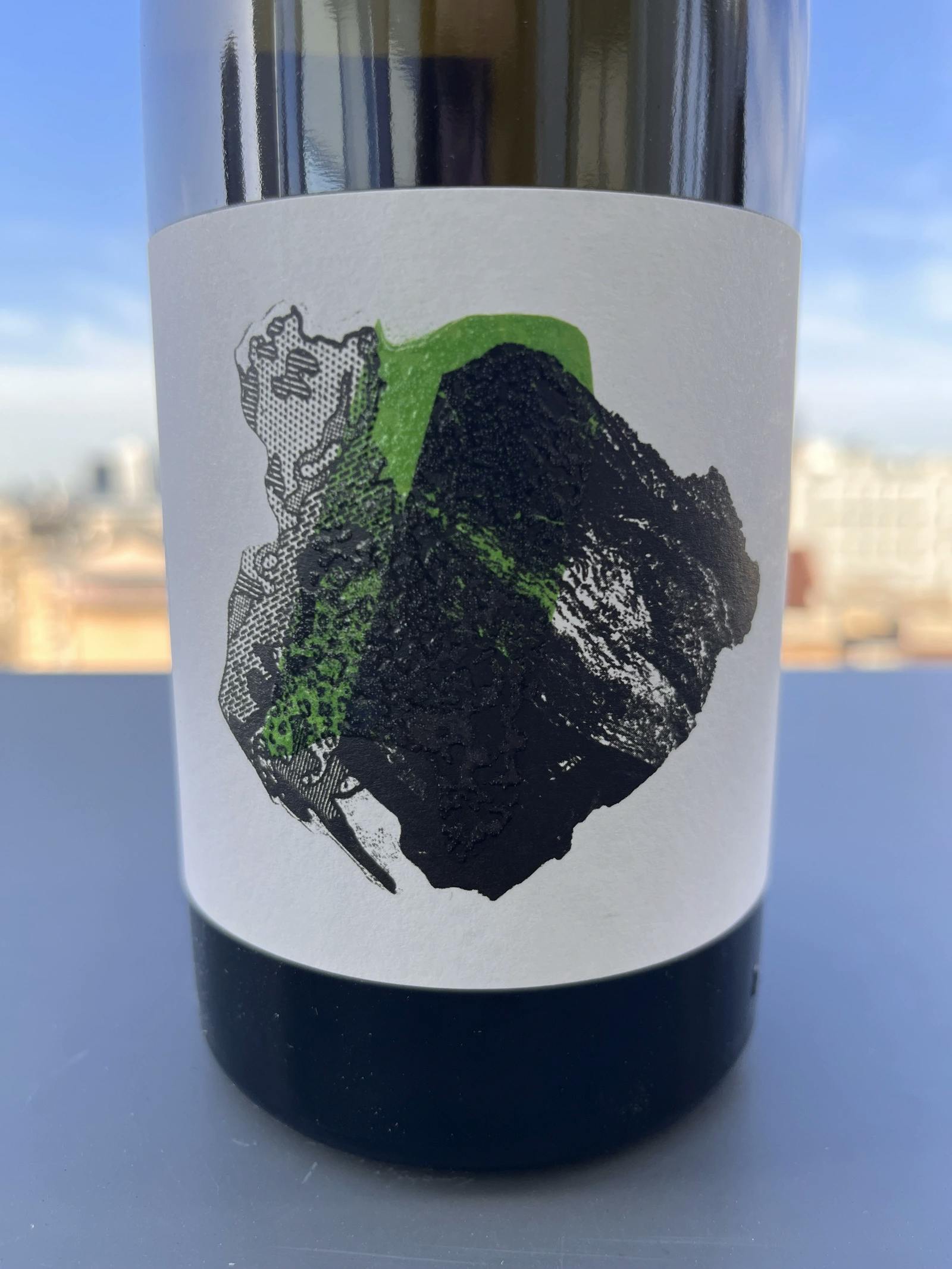
This wine secured the 🏅 4th place in our wine tasting lineup.
The Ignios Orígenes project, helmed by Borja Pérez, emphasizes varietal wines from single vineyards. The Marmajuelo variety, distinct yet unlinked to any known Iberian peninsula grapes, showcases a different facet of the Canarian terroir, especially when cultivated in the volcanic clay loam soils of Finca La Vizcondesa.

The 2017 Ignios Orígenes Marmajuelo from the Ycoden-Daute-Isora D.O. embodies a straightforward vinification process. Post-harvest in the third week of August, the Marmajuelo grapes were directly pressed into a used 500L barrel, initiating a native yeast fermentation, later transitioning into Malolactic Fermentation (MLF). The wine underwent a 13-month ageing period in the same barrel without bâtonnage. The production stood at 1,497 bottles in 2017.
Puro Rofe Tilama 2019
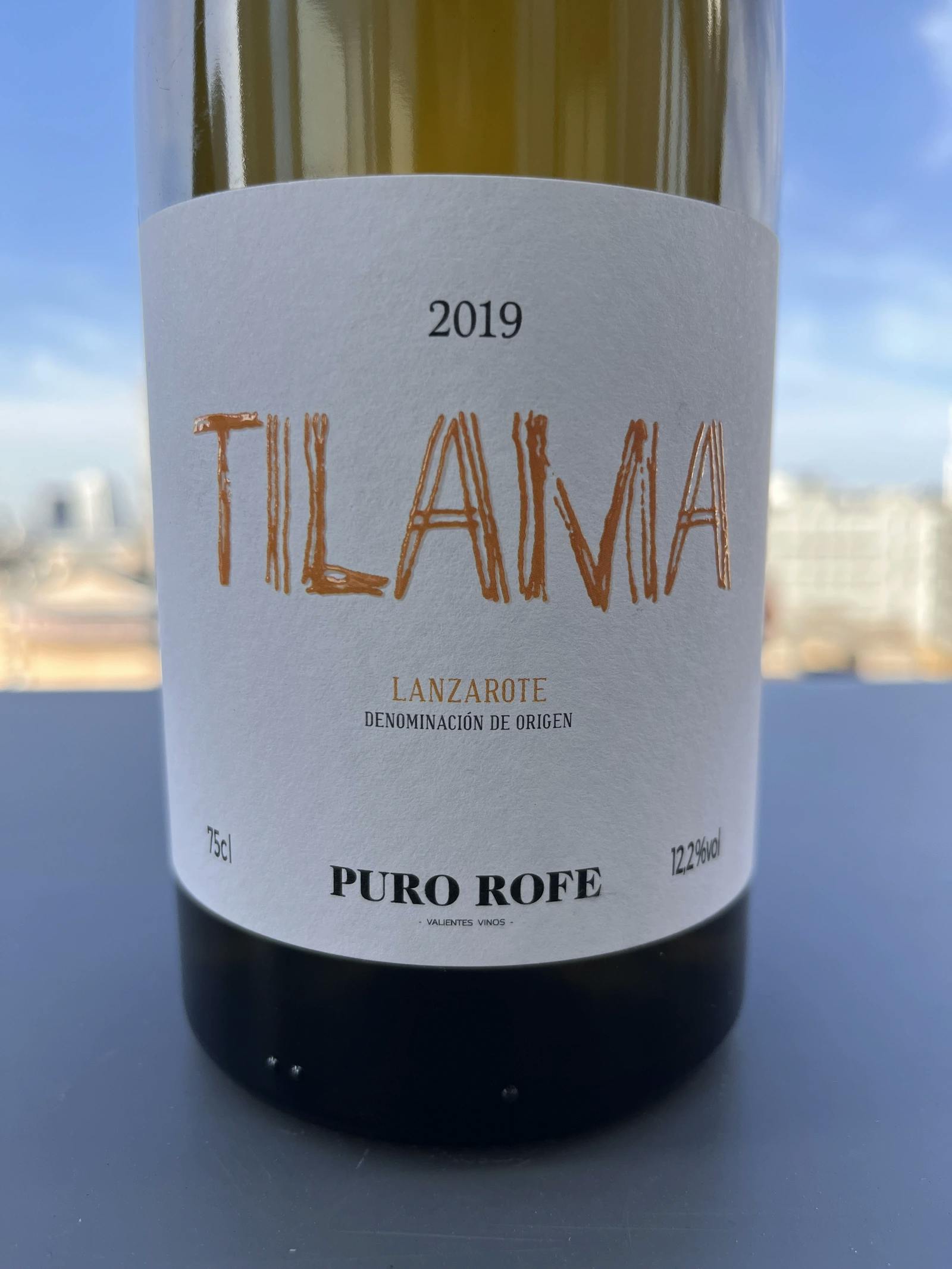
This wine secured the 🥉 3rd place in our wine tasting lineup.
To appreciate and understand the heroism of Puro Rofe winery, one must learn a bit about their place of origin. Lanzarote is the easternmost of the Canary Islands, situated just 100km from the continent of Africa. The warmest and driest part of the Canaries, it receives a scant 100 mm of rainfall in an average year (vs 620 mm in Kyiv). Subjected to nearly constant winds blowing off the Sahara desert, known locally as "alicios", this would be a challenging place to grow vines even if they were not planted on a vast and volatile volcanic fissure. The lunar landscape of Lanzarote was largely formed by an eruption that lasted from 1730 to 1736, which covered 200 square km of the islands with up to 3 meters of ash and lapilli (a sphere-shaped droplet of lava).
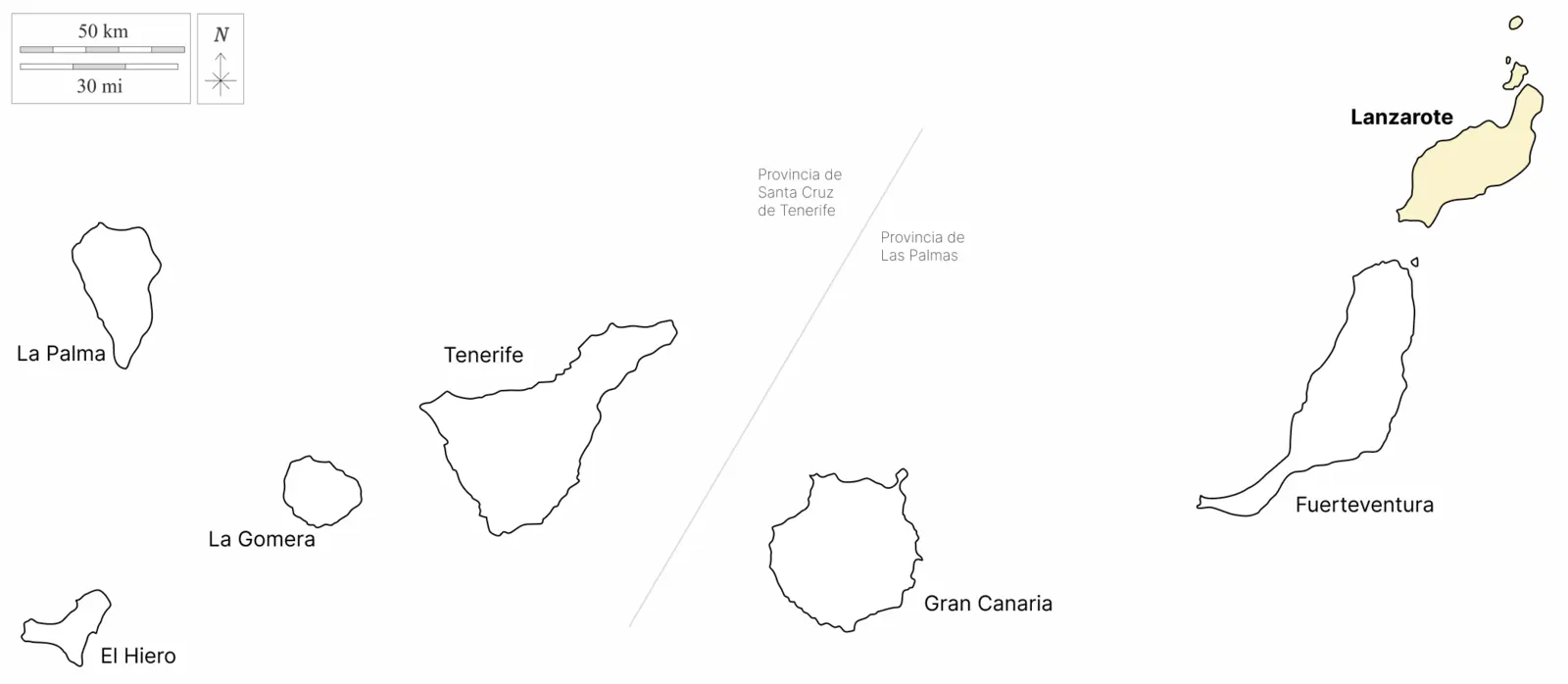
The volcanic devastation of the 18th century proved to be a boon for viticulture. Adapted to harsh conditions, varieties like Listán Blanco, Listán Negro, Negramoll, Malvasía Volcanica, and Diego were replanted on Lanzarote starting shortly after the eruption. To overcome the twin obstacles of the alicios and the meters of dry, free-draining volcanic lapilli, farmers in Lanzarote developed a unique practice of viticulture – the iconic hoyos (Spanish for "holes") of Lanzarote. Hoyos are hand-dug holes, sometimes up to three meters deep, with a single vine planted in the bottom. The depth of these holes allows the vine to access the moisture present several meters below the surface of the volcanic topsoil while also protecting it from the alicios. The most exposed hoyos are also partially surrounded by walls, abrigos, to add an extra layer of protection from the constant winds. Combined, these two features have become the indelible visual image of grape-growing in Lanzarote. No matter what elevation you view Lanzarote, the overwhelming impression is that of a landscape of craters – natural and human-made.
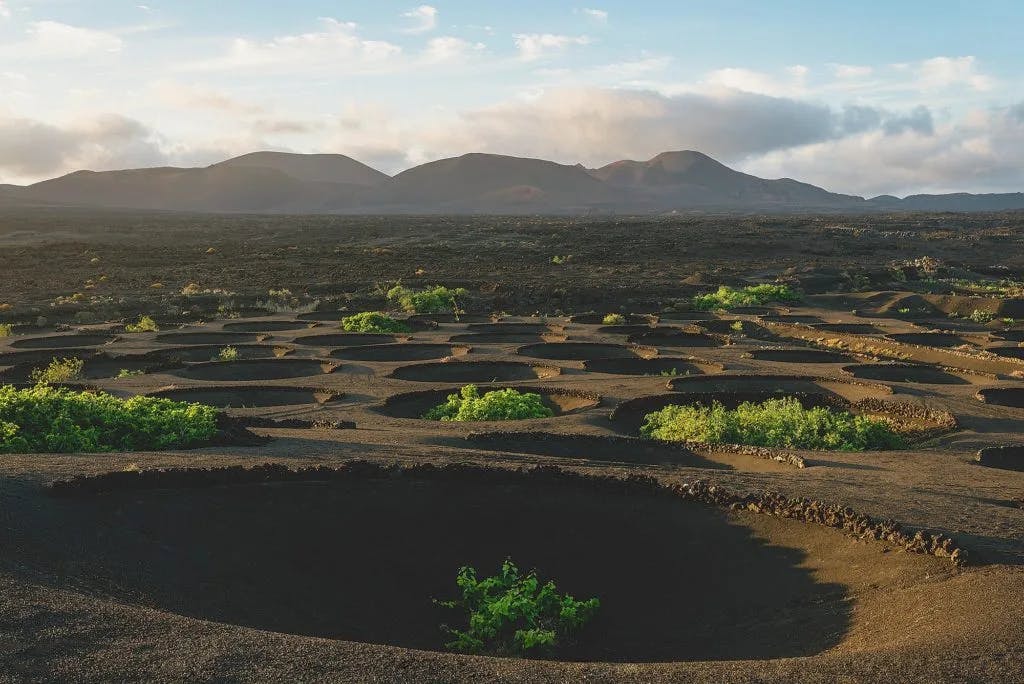
The Puro Rofe winery emerged from a genuine passion for wine and a desire to honour traditions and the distinct terroir of Lanzarote. The winery's story began in the sweltering summer of 2017 when Carmelo Peña, a young winemaker from Las Palmas province, returned home from Portugal with a vision of creating his own wine on the island. His friend Rayco Fernández, a sommelier and wine merchant, had been searching for an artisanal wine to include in his catalogue, leading to a collaborative venture. The duo connected with local winegrower Vicente Torres, and soon after, Puro Rofe was born with the harvesting of Malvasía Volcánica grapes in La Geria. The name Puro Rofe reflects the intrinsic connection between the wines and Lanzarote's terroir, particularly the ashy soils called "rofe" that emerged from historical volcanic eruptions.
Puro Rofe is more than a winery; it's a collective endeavour. The winery operates akin to a private cooperative, fostering a community-centric approach where all members contribute to the winemaking process. Rayco Fernández, alongside partner Silvia Viot, aimed to not only create exquisite wines but also preserve the island's viticultural heritage by working with local organic growers. The wines from Puro Rofe are an embodiment of Lanzarote's unique and somewhat surreal landscapes, brought to life through meticulous cultivation practices in the challenging yet fertile volcanic soils.
The ethos of Puro Rofe resonates with the broader movement towards sustainability and terroir-expressive winemaking. The collaborative model, combined with an unwavering commitment to organic farming and sustainability, sets a compelling narrative in the modern wine scene. The winery's reverence for Lanzarote's distinctive terroir, coupled with its community-driven approach, positions Puro Rofe as a noteworthy player in the viticulture realm, worthy of attention from connoisseurs and experts alike. Through Puro Rofe, the narrative of Lanzarote's remarkable viticulture continues to be told, reflecting a profound respect for the land and a forward-thinking approach to winemaking.
Tilama, one of the distinctive wines from Puro Rofe, manifests a deep connection to Lanzarote's unique terroir, particularly the village of Tinajo which is just a few kilometres from the Atlantic Ocean. The vineyards for Tilama are owned by Ricardo and Olegario Cabrera. The wine is crafted exclusively from centenarian vines of Malvasía Volcánica grown in black volcanic sands overlaying clay soils. These vines are cultivated using the traditional ditch system peculiar to Tinajo, contrasting with the common hole cultivation method seen elsewhere on the island. The ditch system is less labour-intensive, allowing for a more productive yield as the flat terrain and proximate surface roots face minimal competition, typically covered with about 15 cm of rofe to retain nocturnal humidity.
The grapes are hand-harvested. The whole clusters of grapes are crushed by foot in stone lagars, where they undergo a short maceration before being fermented with natural yeasts in neutral 500L French oak barrels. The wine is then aged for eight months in the same barrels.
Bimbache Vinicola Tinto El Hierro 2018
- Region
- Spain » Canary Islands » El Hierro DO
- Type
- red still, dry
- Producer
- Wine
- Vintage
- 2018
- Grapes
- Listán Negro, Vijariego Negro
- Alcohol
- 11
- Volume
- 750 mL

This wine secured the 🏅 5th place in our wine tasting lineup.
Bimbache Vinícola is a modest yet noteworthy winery located on the island of El Hierro, the smallest and most remote of the Canary Islands. The birth of this winery comes from a sense of obligation felt by its founders towards preserving the quality and originality of the varietals unique to the region. This obligation drove them to embrace the challenge of wine-making on an island known more for its isolation than its viticulture.

The team at Bimbache Vinícola, led by Pablo Matallana in oenology, embarked on this venture after rallying support from banks, friends, and family. Operating from the northern part of the island, they aim to keep their operations small and sustainable, aligning with the ethos of an island with a population of merely 10,000 inhabitants. Their work extends beyond their own vineyards to collaborating with local viticulturists who share their philosophy and approach to wine-making.
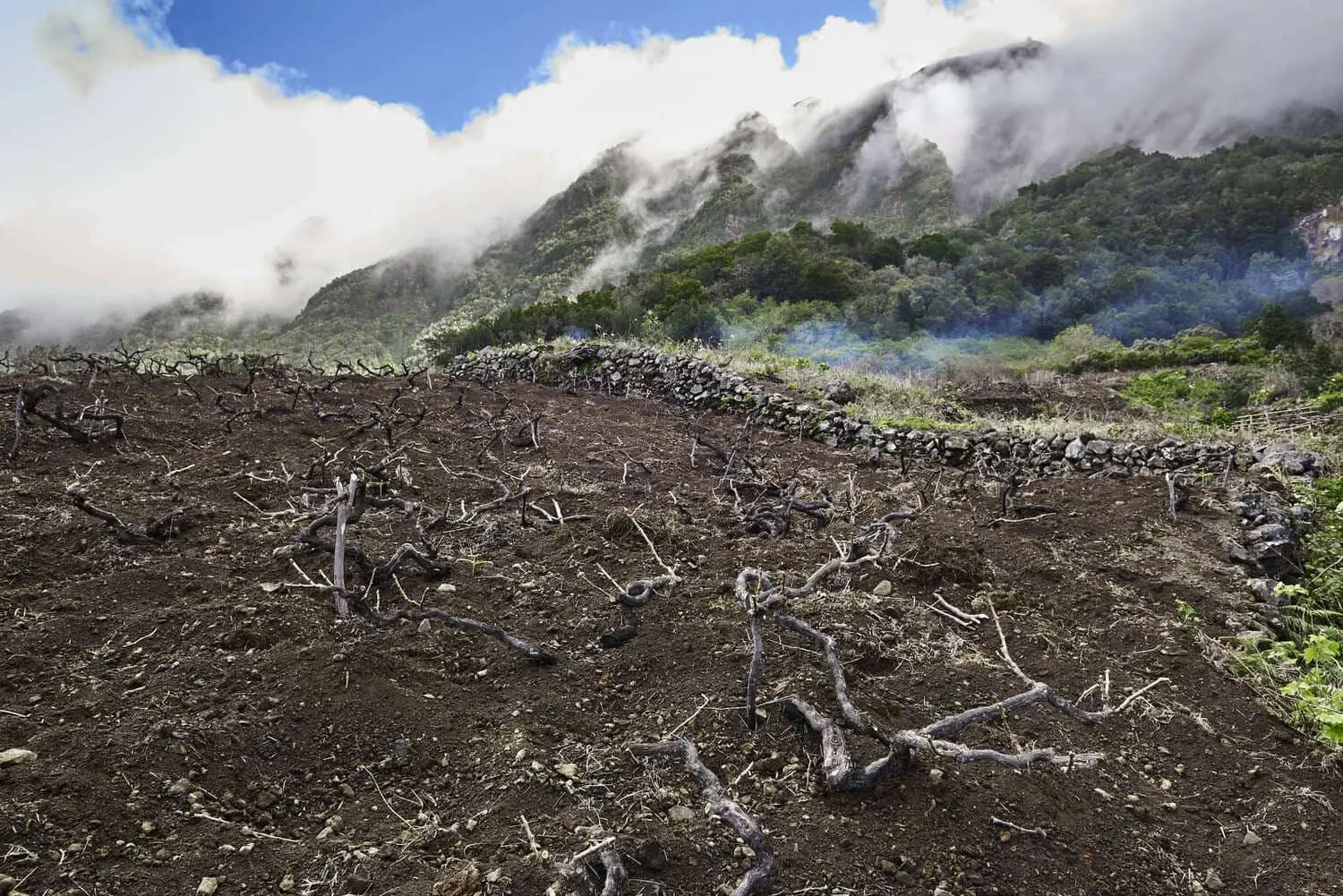
The Bimbache Vinícola Tinto El Hierro 2018 is a blend of Listán Negro and Vijariego Negro grape varieties, harvested from vines aged between 50 to over 100 years. The wine is crafted following sustainable farming practices on sandy clay soils at an altitude of 800 meters. The grapes are hand-harvested and destemmed before undergoing natural yeast fermentation in tanks without temperature control, followed by a two-week maceration period. The wine is then aged for 12 months in tanks and is bottled unfined and unfiltered.
Victoria E. Torres Pecis Sin Titulo NG 2017
- Region
- Spain » Canary Islands » La Palma DO
- Type
- red still, dry
- Producer
- Wine
- Vintage
- 2017
- Grapes
- Negramoll
- Alcohol
- 13.5
- Volume
- 750 mL
- Find at
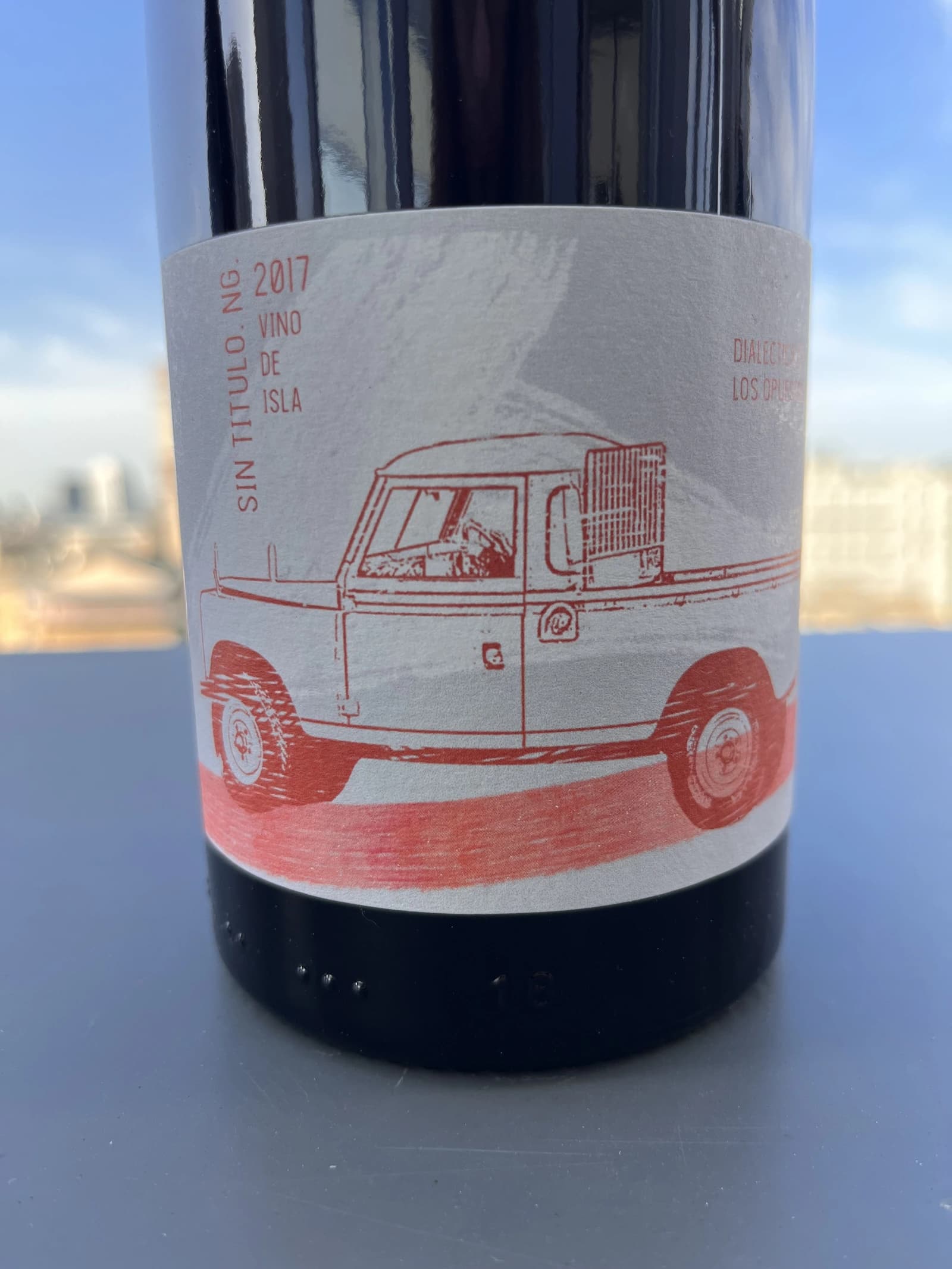
This wine secured the 🥈 2nd place in our wine tasting lineup.
La Palma island is a fascinating landscape for viticulture, with its vineyards stretching across varying altitudes, the highest being at 1,500 meters above sea level. The distinctive altitudes and micro-climates on the island result in a prolonged harvest season spanning up to three months. The southern part of La Palma, housing Victoria E. Torres Pecis's bodega in Fuencaliente, has vineyards on pure black, fresh volcanic sand. In contrast, the northern part hosts vineyards at around 1,000m altitude on geologically older, red volcanic soils. The island's isolation from modern Spain has allowed for the preservation of heritage white varietals such as Sabre, Gual, Albillo Criollo, Listan Diego, and Listan Blanco. However, Negramoll is the primary red grape variety cultivated here, believed to have originated from Jerez about 500 years ago.
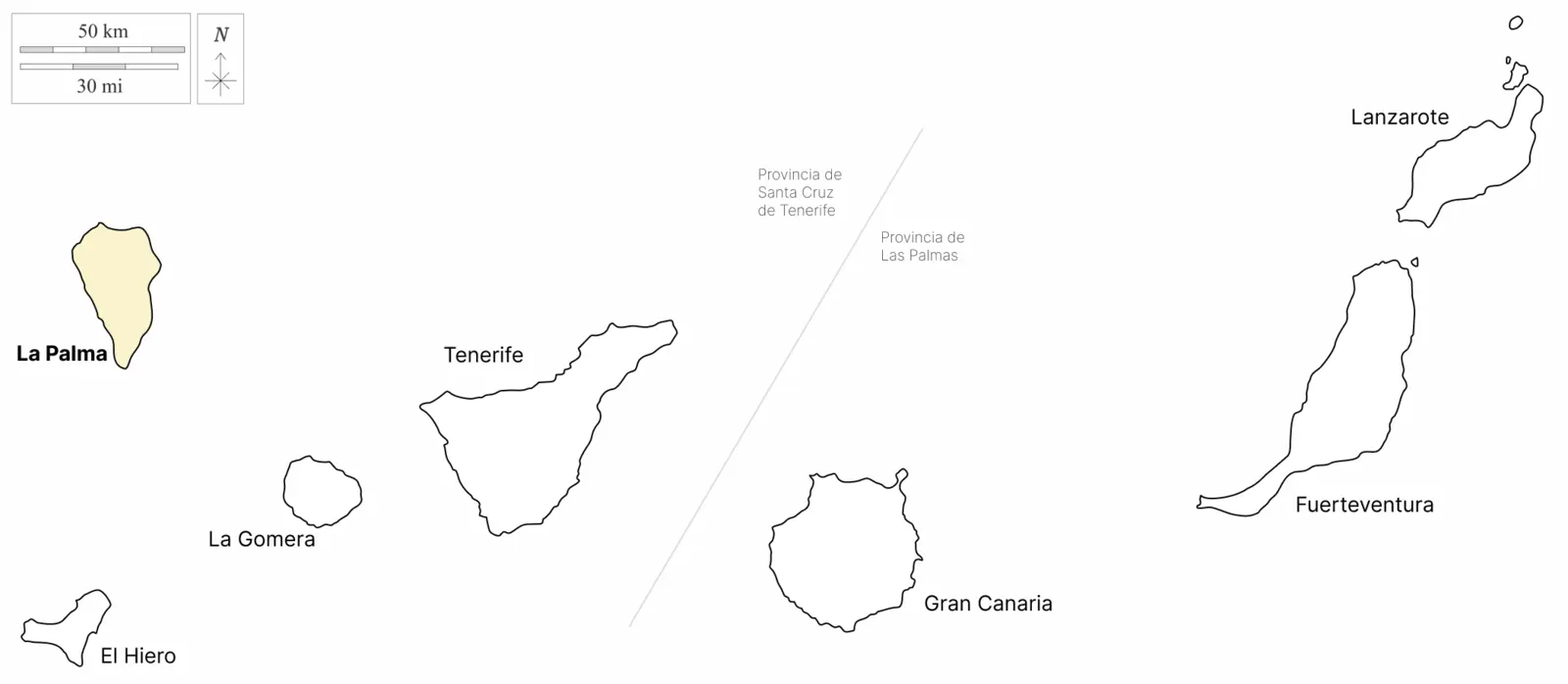
Victoria Torres Pecis is the sole owner and caretaker of her family's centenarian winery in Fuencaliente. Her father died in 2014. Since then, she has been working alone against the elements and harsh conditions of the island. Victoria learned the winemaking craft by watching her father use an old lagar (dating from 1885) to press grapes and vinify them in chestnut barrels. And not much has changed in the winery over time. It is small, with few stainless steel tanks, old American and French oak, and chestnut barrels. Only native yeasts and no temperature control.
The ethos of Victoria's viticultural approach hinges on restoration. Initially, she focused on identifying available vineyards and convincing growers to allow her to work on their vines. This step was followed by rescuing dying plants and enhancing the overall health of the vineyards, showcasing a commitment to sustainable viticulture. The narrative of Victoria E. Torres Pecis winery is not just a story of wine but a reflection of resilient viticulture amidst the challenging yet distinctive volcanic terroir of La Palma.
I am like the Listán Blanco. Very resistant.
In total, Victoria works on 4.7 hectares: 2 of them are her property and the rest she rents. She also purchases the grapes from the farmers she works closely with. All these vineyards are scattered around the island - from the southern tip to the west side of Roque de Los Muchachos. That also means that the altitude varies - some are at 1,500 m above sea level. All vines are ungrafted (as mentioned on the labels) because phylloxera never reached The Canaries. And she works with quite old vines - some are older than 130 years!
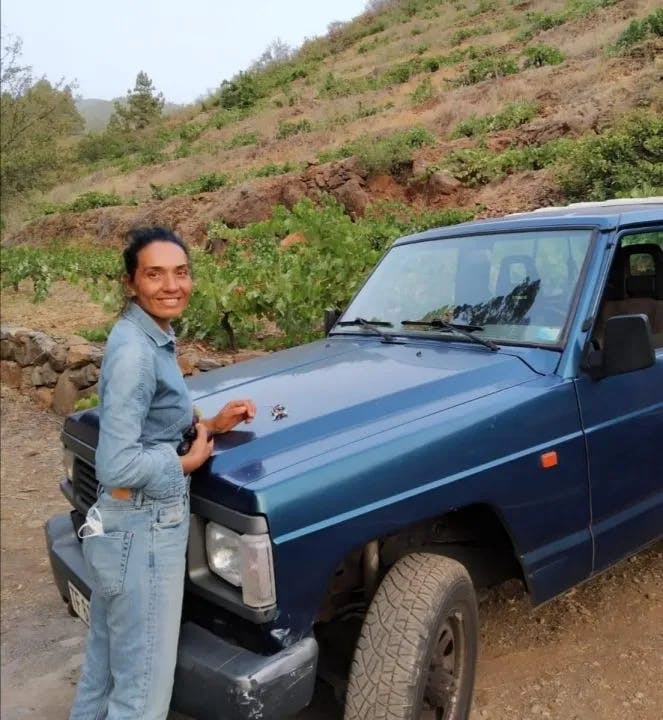
Victoria makes a "Sin Titulo" (without a name) bottling every vintage, but the wine is always a one-off. For example, in 2016 Sin Titulo was an oxidative white, but in 2017 it is a red made from Negramoll. The idea is to blend grapes from the first plot harvested (August in 2017) and then from the last plot picked (October/November). It turns out, that it takes around 3 months to harvest all the plots around the island - the weather and elevation allow it. The first goes into an oak barrel and the second into stainless steel. Both see nine months on lees, where they pick up some colour and texture.
2017 is a vintage of very low yields. Mostly because of hail. So only 1200 bottles were produced.
Victoria E. Torres Pecis Vino de Solera de Listán Blanco 2013
- Region
- Spain » Vino de Mesa
- Type
- white still, dry
- Producer
- Vintage
- 2013
- Grapes
- Listán Blanco
- Alcohol
- 13
- Volume
- 750 mL
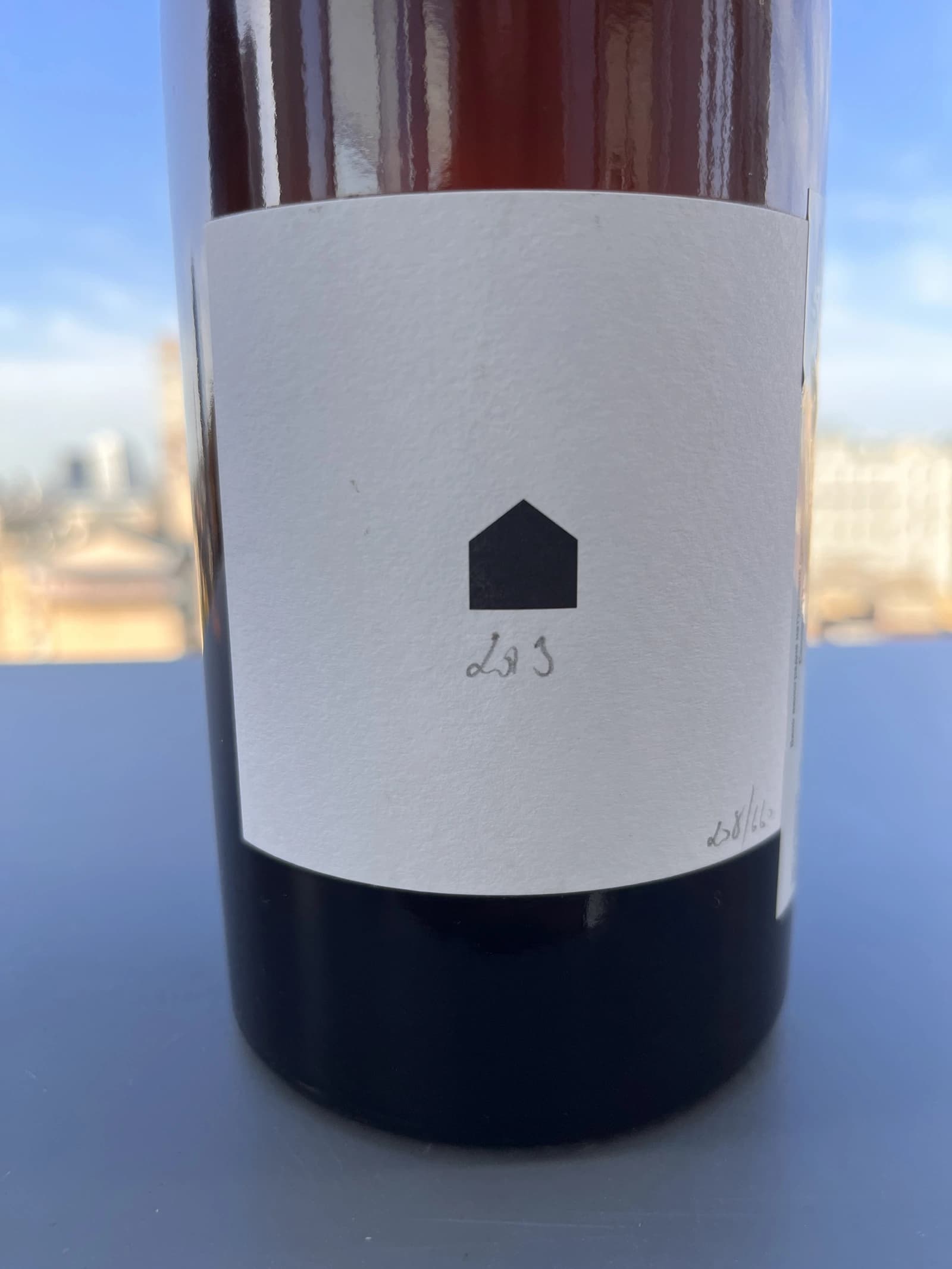
This wine secured the 🥇 1st place in our wine tasting lineup.
Unfortunately, there is no public technical information available about Victoria E. Torres Pecis Vino de Solera de Listán Blanco 2013, so there is little to share regarding its production details. It's understood that the wine production was initiated by the late Juan Matías Torres, Victoria's father. This wine appears to be crafted using the Solera method, a traditional Spanish aging system wherein younger wines are progressively blended with older wines over several years. This method ensures a consistent style and quality across vintages, by achieving a harmonious blend of the aged wine's complexity with the youthful vibrancy of newer wines.
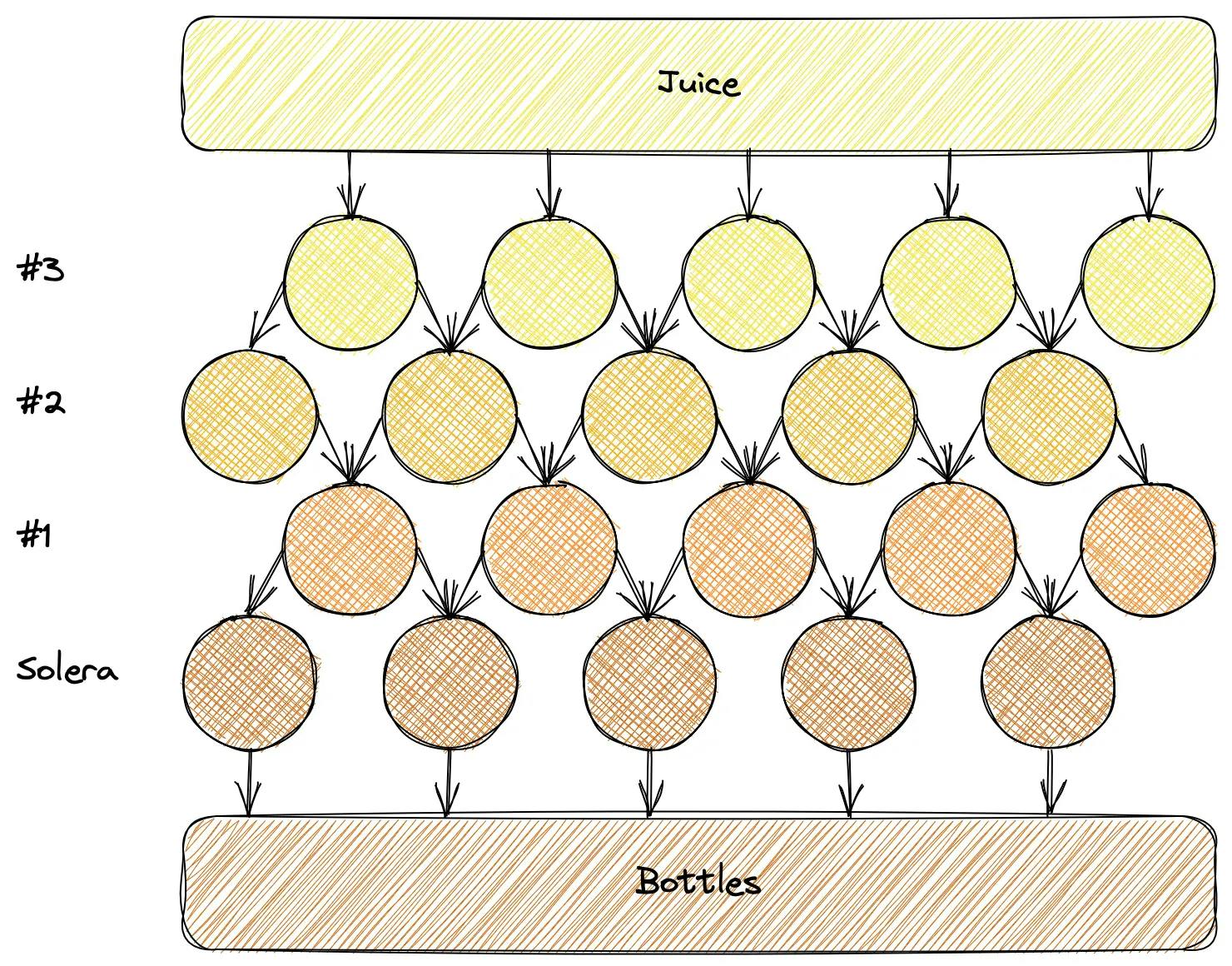
Resources
- Harding, J. (2023). The Oxford companion to wine. Oxford Companions.
- Bains, S. (2020b). The epic wines of the Canary Islands.
- Spain, Home To Europe’s Highest Altitude Vineyards. Anna Harris-Noble.
- Wine From Tenerife – The Canary Islands. Wine Folly.
- Canary Islands. Wikipedia.
- Borja Pérez. MFW.
- Envínate. José Pastor Selections.
- Envínate. Spanish Wine Lover.
- Envínate. Indigo Wine.
- Puro Rofe. European Cellars.
- DO Lanzarote.
- Puro Rofe. Spanish Wine Lover.
- Rebirth and Resilience — Heroic Viticulture in Spain’s Canary Islands. Vinka Woldarsky
- Puro Rofe. Sager and Wine.
- Bimbache.
- Victoria E. Torres Pecis. Bowler Wine.
- Victoria Torres Pecis – The New Star of the Canaries. dccrossley.